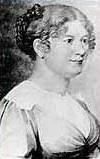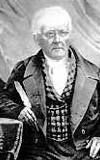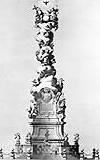18th century
The founding of the woollen mill (1672), which was nationalised in the 18th century, and at one time employed more than 50,000 people, owes its origins to the idea of mercantilism.
In the war of the Austrian succession of 1741/42, during which Linz was occupied by Bavarian and French troops, the suburbs were burnt when the Austrian forces reoccupied the city.
The reform measures undertaken by Emperor Joseph II led to Linz receiving its own diocese (1783), new parishes and numerous charitable foundations that exist to this day (the citizens’ hospital, the Pruner foundation, Theresia foundation, brothers house, cellared orphanage).
1784
The lyricist Marianne of Willemer(-Pirngruber) is born in Urfahr.
The monasteries of the Carmelites, the Capuchins in Urfahr and later the Minorites are abolished as part of the regulation of parishes and monasteries under Emperor Joseph II. Many churches and chapels in the city are abolished, but new parishes are created in various districts.
Joseph's regulation of municipalities marks the end of self-government. From now on the city is led by a mayor and six municipal counsellors who are all subject to scrutiny.

1783/1784
Founding of the diocese Linz; The erstwhile Jesuit church St. Ignatius becomes the cathedral (today’s Old Cathedral).
1783
Wolfgang Amadeus Mozart composes the ‘Linz Symphony’ (No. 36) in four days, while passing through at the invitation of Count Anton of Thun.
24th April 1782
Pope Pius VI visits the city on his visit through Linz.
1779 - 1847
The public accountant Benedikt Pillwein becomes the father of Linz historians.

1774
Founding of a ‘bibliotheca publica’, which later also receives manuscripts and books from the Upper Austrian monasteries and foundations which were repealed by Joseph II (today’s Academic library).
1773
Abolishment of the Jesuit order and all its facilities in Linz.
1756
The Brothers of Mercy settle on the Schillerplatz in Linz. In 1787 a monastery and church built by the Carmelites on Herrenstraße is turned over to them for use as a hospice.
1754
Nationalisation of Linz's Woollen Mill.
1751/1752
Construction of the first permanent barracks on the lower banks of the Danube.
1745 - 1749 / 1754 - 1757
Construction of a monastery by the Order of St. Elizabeth in two stages. The church is built between 1762 and 1768.
1742 - 1748/1778
Construction of the pilgrimage church on the Pöstlingberg under Duke Maximilan of Starhemberg.

1741/1742
Siege of the city, which was occupied by French and Bavarian troops, by Austrian forces in the War of the Austrian Succession.
1739
Death of Linz's famous master builder Johann Michael Prunner.
1734 - 1739
Construction of the Prunerstift by mayor Johann Adam Pruner to be a care house.
1717 - 1723
Construction of the Trinity Column in the Main Square in memory and in thanks for being spared from the plague of 1713.

1713
Construction of the first temporary barracks on the Soldateninsel.
1711
Franz Anton, Duke Harrach, Archbishop of Salzburg founds a branch of the Teutonic Order which survives until 1796 and serves as a seminary from 1804 onwards. The church was built between 1718 and 1725 to plans by Johann Lukas von Hildebrandt.